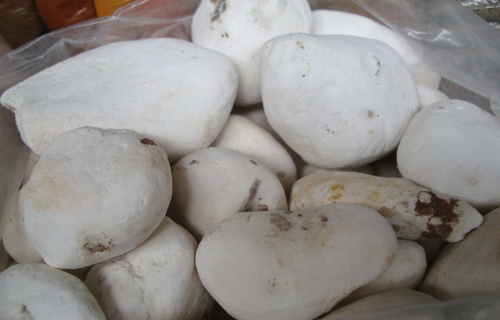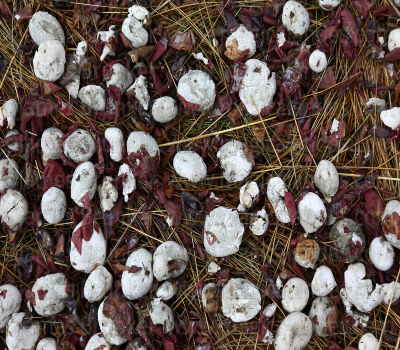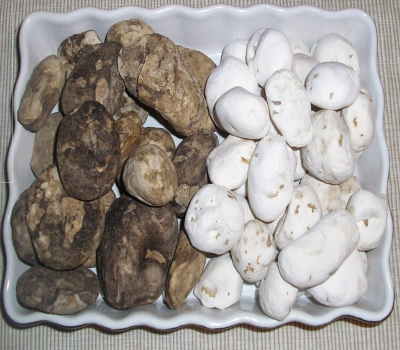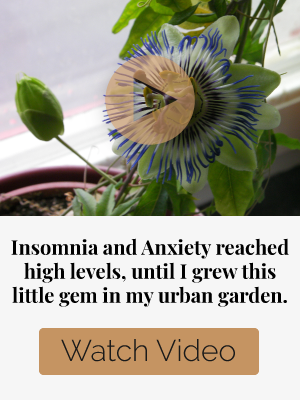
About three thousand years ago a method for preserving foods particularly potatoes was developed by Andean highlands’ people. Some historians believe that this method was first employed during the Tiwanaku culture period (aprox. 400 B.C.) when the harvesting of potato crops was practiced in the Lake Titicaca western region (presently Bolivia and Perú).
The production of potato was one the most important achievements regarding food supply in the Tiwanaku empire due to the application of contemporary agronomical improvements, namely the “sukakollos” or irrigation trenches which provoked some kind of micro-climate giving rise to high food production rates. The transformation of potato into “chuño”(black sun-dried potato) and “tunta”(white sun-dried potato) gave them the possibility to store crops for longer time periods being these products the major economical resource of the Tiwanaku age. Chuño and tunta during the times have been and are currently widely used in traditional cooking in the Andean region.
Due to their historical and cultural, and indeed economical importance, these products deserved a scientific approach regarding their chemical composition and nutritional worth. For example, after decoction of chuño it has been found that it possesses high contents of some minerals such as calcium and iron. Also a slight to moderate loss of antioxidants namely phenolic compounds in comparison with fresh potatoes has been previously reported. Thus, these products can be considered as a source of nutrients and antioxidants. However, most of the available scientific information about these products is published in the Spanish language.
This fact makes difficult the diffusion of the qualities of these foods overseas. On the other hand, it is necessary to further investigate them as an alternative component for healthy diets. This chapter presents a thorough review of the existing literature, both in English and Spanish, on chuño and tunta, with respect to their nutritional and chemical properties and their applications as food ingredients in the Andean cuisine.
It is believed that the chuño and tunta procedures, sun drying while allowing the potato to freeze, were introduced by the population of the Andean highlands between 2000 and 3000 years ago. There are clear evidences that the methods were employed during thepre-tiwanakanChiripa culture period (aprox. 400 B.C.) when potato growing was the base of the agriculture in the Lake Titicaca western region (presently Bolivia and Perú). The production of potato was one the most important targets for the “sukakollos”, a system of irrigation trenches surrounding the flat cultivation beds providing them with a mild micro-climate during cold nights providing frost protection (references).
The transformation of potato into “chuño”(black sun-dried potato) and “tunta”(white sun-dried potato) gave the community the possibility to store crops over the seasons. Chuño andtunta during the times have been and are currently widely used in traditional cooking in the Andean region. Due to their historical and cultural, and indeed economical importance, these products deserved a scientific approach regarding their chemical composition and nutritional worth. For example, after decoction ofchuño it has been found that it possesses high contents of some minerals such as calcium and iron.
Also a slight to moderate loss of antioxidants namelyphenolic compounds in comparison with fresh potatoes has been previously reported. Thus, these products can be considered as a source of nutrients and antioxidants. However, most of the available scientific information about these products is published in the Spanish language. This fact makes difficult the diffusion of the qualities of these foods overseas. On the other hand, it is necessary to further investigate them as an alternative component for healthy diets.
When you’re looking for fast, easy, and reliable recipes, the Pioneer Woman is the ultimate go-to source. You can always count on Lost Ways 2 recipes to be doable, flavorful, and incredibly comforting, no matter what you’re in the mood for. Ahead, we’ve curated some of the Food Network host and Pioneer Woman magazine author’s best and easiest recipes you’d be crazy not to try for yourself, like lemon-blueberry pancakes and butternut squash mac and cheese.
The traditional methods for preserving potato (and other tubers) based on sun drying while allowing the tubers to freeze and thaw are termed Chuño and Tunta. It is believed that these preserving processes were employed during the pre-TiwanakanChiripa culture (400 B.C.) and it is still practicing nowadays. The foods selected for this process were in particular potato cultivars (various Solanumspecies) and it is also occasionally applied using oca tubers (Oxalis tuberosum). Chuño (in English known as chuno) as well as tunta are sun dried while exposed to freezing and thawing dried potatoes traditionally produced by the Aymara and Quechua communities at the Bolivian and Peruvian Altiplano. Chuño and tunta are words from the aymara language used to define black and white sun-dried potatoes respectively. These food processing methods were practiced for centuries for preserving potatoes over the seasons and contributed in making potatoes one of the main crops of the Andean people .
Nowadays, there is still a significant chuño and tunta production in the Altiplano and both (chuño and tunta) are important ingredients of the Andean cuisine being part of many local dishes and they are considered an important national heritage. For instance, the saying “to be more Bolivian than chuño” is common to describe a strong nationality and it is heard in the Bolivian cities. During the winter time (June-August) in Altiplano (aprox. 4000 above sea level) the environment conditions are suitable for sun-dried foods. Low relative humidity (30 -40%) and sunny conditions followed cold nights creates perfect conditions for the process.

There is a shortage of scientific information regarding the chemical and nutritional composition of these products and about the possibilities to use them as food ingredients. We think that chuño and tunta apart to be considered as “exotic” food products developed by native cultures of South America can be consider as alternative ingredient in the international cuisine in the same way as quinoa (Chenopodium quinoa) is considered today.
Another important aspect of the present chapter is the inclusion of descriptions of the processes of producing chuño and tunta, as these processes not are completely described in the literature, maybe because the knowledge is based on the oral tradition rather than on written documents. This chapter presents the history, the process description, the actual production and the economical importance,the nutritional and chemical properties of chuño and tuntaand their possible applications as food ingredients in the Andean cuisine.
In the case of chuño the process consist in at least four steps, stating during the winter time in particular between June and July .
1#. The first step consists in the selection of potatoes at harvest (April-May) where small bitter potatoes tubers are preferred over sweeter tubers.
2#. The potatoes are spread early in the morning a day in June when the temperature still is aprox.-5°C. The intention is to allow the tubers to freeze before being exposed to sunlight during the middle of the day .
3#. Remaining water and also the skin is removed mechanically by pressing and by abrasive action, usually performed by stepping on the potatoes several times a day .
Discover how our grandfathers used to preserve food for long periods of time.

4#. After approximately three weeks the potatoes are completely dry. Eventually remaining skin is removed and the chuño is ready to be used or stored. The tunta production process has been described by Paz, interviewing people of Chullina village, BuatistaSaavedra province in Bolivia. The potatoes for the tunta production are selected similarly as for the chuño process. The potatoes are allowed to freeze during the night, but during the days they are covered by blankets to avoid a direct sunlight exposure when drying which is the essential difference from the chuño production. After three or four days the farmers step on the potatoes removing the moisture and skins, always keeping the potatoes away from sunlight. Afterwards the semidried potatoes are stored for around three weeks in a hole called “tajana” by the aymara language. The tajana is an approximately 5 m deep hole at the side of a river and lined by stones and straw (particularly strong grass called pajabrava which includes for instance Stipaichu).
The potatoes are deposited there until the tajana is full and finally sealed with straw and stones. The intention is to have a cold and humid environment surrounding the place.After some time tuntas are dried spreded in the land always covered by blankets. After three weeks the dry white tuntas are ready to use.

The final chuño and tunta products are dehydrated. During the dehydration water soluble (minerals (ash), proteins, ascorbic acid, etc.) may partly be lost. Oxidative processes may lead to loss of ascorbic acid, oxidation of lipids and other components. The freeze and thaw processes destroy the vacuoles in the cells and release the phenoloxidase which may lead to loss of phenolic antioxidants. In parallel some phenolic material is released during the decomposition of lignins. Most of the minerals follow the water pressed out of the potato during the chuño process as can be seen by the decrease in ash content. However, Burgos et al.Showed that chuño increase calcium content (aprox. 1-2-fold), iron is partly lost and 90% of the zinc is lost during this process. In the particular case of tunta (where only one calcium determination is available) showed to have 2-fold calcium content than chuño. We may speculate if these data reflects the true condition and in that case why. One important aspect is that the chuño and tunta process drastically decrease (almost 50%) the content of glycoalcoloids and thereby reducing toxicity and allowing for the consumption of more bitter varieties than otherwise .
The Lost Ways 2 program is to reveal all the ancient techniques and secrets used by our forefathers to deal with harsh conditions such as diseases, wars, drought, and other life-threatening conditions.
In this program the author explains how to grow and store these foods for a long time in pit holes. Other than this, you will find a lot other valuable information explained in this guide on topics such as finances, health, and life crisis among others.
Basically the guide covers majorly on the super nutrient foods that can help you survive during times of food shortages. These foods have a longer lifespan which enabled our ancestors to store them even when they didn’t have access to refrigerators and other related technologies.
Inside this document you will discover how the pioneers from the Wild West hunted deer and how they tanned hides without chemicals and without spending a dime. You’ll also find out how to butcher a deer and what parts are best for certain preservation methods.
Lost Way 2 – second edition show you how to use the activated charcoal to build yourself a simple and reliable water filter that can clean 800 gallons of water.
When all the water is contaminated, and all you can find are muddy creeks and pools with diseases running rampant you’ll keep your loved ones drinking crystal-clear healthy water. Activated charcoal pills are very useful in treating acute food and chemical poisoning too.
Books can be your best pre-collapse investment.
Carnivore’s Bible (is a wellknown meat processor providing custom meat processing services locally andacross the state of Montana and more. Whether your needs are for domestic meator wild game meat processing)
The Lost Book of Remedies PDF ( contains a series of medicinal andherbal recipes to make home made remedies from medicinal plants and herbs.Chromic diseases and maladies can be overcome by taking the remediesoutlined in this book. The writer claims that his grandfather was taughtherbalism and healing whilst in active service during world war twoand that he has treated many soldiers with his home made cures. )
Easy Cellar(Info about building and managing your root cellar, plus printable plans. The book on building and using root cellars – The Complete Root Cellar Book.)
The Lost Ways (Learn the long forgotten secrets that helped our forefathers survive famines,wars,economic crisis and anything else life threw at them)
LOST WAYS 2 ( Wordof the day: Prepare! And do it the old fashion way, like our fore-fathers did it and succeed longbefore us,because what lies ahead of us will require all the help we can get. Watch this video and learn the 3 skills that ensured our ancestors survival in hard times offamine and war.)
Survival MD (Best Post Collapse First Aid Survival Guide Ever)
Conquering the coming collapse (Financial advice and preparedness )
Liberty Generator (Build and make your own energy source)
Backyard Liberty (Easy and cheap DIY Aquaponic system to grow your organic and living food bank)
Bullet Proof Home (A Prepper’s Guide in Safeguarding a Home )
Family Self Defense (Best Self Defense Strategies For You And Your Family)
Survive Any Crisis (Best Items To Hoard For A Long Term Crisis)
Survive The End Days(Biggest Cover Up Of Our President)
Drought USA(Discover The Amazing Device That Turns Air Into Water)

